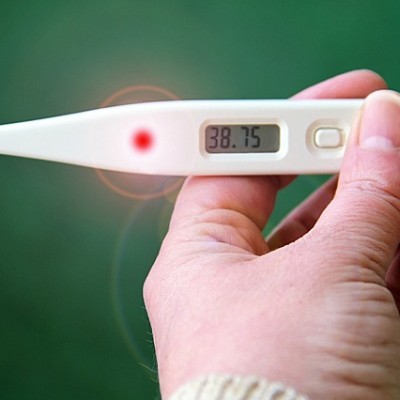
Written by Charmaine Dennis, Naturopath
Often a fever is mistaken as foe, and quickly controlled with Paracetamol. It is important to realise that a fever is actually one of the body’s mechanisms to fight an invasion (ie the real enemy -a virus or bacterium that has invaded primary defences). It is a good sign that the body’s vital force is working acutely to ward off an infection so it does not progress. It is far more beneficial to manage a fever than suppress it.
A fever is generally preceded by chilliness, sometimes shivering (to increase the body’s temperature), headache and a weak feeling in the limbs. In the hot stage, the skin feels dry and hot to touch, heart rate is increased and there is often excessive thirst and no appetite. Normal temperature is considered to be between 36-38 degrees celcius, moderate fever 38-39.5 degrees celcius , high fever over 39.5 degrees celcius.
Elevated body temperature has important functions:
While paracetamol may bring the fever down for a while, it does not assist in the germ-fighting process, and sometimes leads to complications. Suppressing the fever actually prevents the body from destroying the pathogen.
Many parents are nervous about letting their baby or child ‘run’ a fever in case of febrile convulsions. These are very rare, related to a rapid rise in temperature rather than a high temperature. While frightening to witness, they are rarely harmful.
Under the tongue is most accurate
Adjust temps taken under the arm by adding 0.5 degrees celcius for accuracy
Rectal temperatures are unnecessary
Sweating is the sign that the fever has broken, and your child will usually rest peacefully at this stage.
If your child’s fever is reaching up to or above your comfort zone for management, there are further steps you can take before reaching for medication to suppress it. As a guide, intervene only if the temperature is over 38.3 degrees celcius in an infant, 39.4 degrees celcius in a child (and 40 degrees celcius in an adult)
Herbal teas should be given regularly at all stages of fever and can be the main fluid consumed. Lime Blossom is the herb of choice for treating childhood fever. It induces sweating and is relaxing to the nervous system, encouraging rest and sleep. It can also help to alleviate headache. Catnip is another with similar effect to lime blossom, but also has an action of calming an upset digestive system. Combine with herbs such as lemon balm for viral infections, elder for mucus congestion, peppermint for nausea and taste
If you have any concern about your child’s condition sometimes it is appropriate to call your doctor or local hospital, or utilise services such as Nurse On Call for advice before attending hospital. Often lengthy waits in cold waiting rooms will make things worse. If you do deicide to make the trip to hospital, make sure you take warm blankets, a pillow, plenty of herbal tea, room temperature water and patience!
You can manage most fevers at home, but your doctor should be called if:
Any fever over 40 degrees celcius or showing symptoms of breathing difficulties, convulsions, turning blue around the lips or vomiting, is to be regarded seriously and medical advice should be sought.
There is no doubt that parenting through a fever with out medication is not the easy way. You do have to be more alert, monitoring regularly and prepared to spend the night cuddling your child for a closer watch. Allowing your child to experience a fever that naturally resolves will, in most circumstances, strengthen his/her immune system, reducing the length of infection and preventing reoccurrence.
At Fertile Ground Health Group all of our naturopaths can give advice and treat a wide range of health conditions. Our resident specialist for children and family naturopathic appointments is Sarah Harris who is a qualified and experienced naturopath with a special interest in children and family health. Being a mother of three beautiful children, she has a wealth of personal experience managing health and illness in kids. Sarah works with families to find solutions for all manner of health conditions, providing practical knowledge, testing where applicable, dietary advice, and herbal and nutritional medicines.